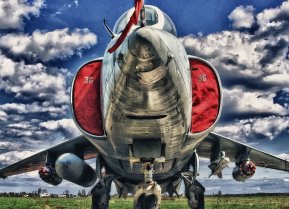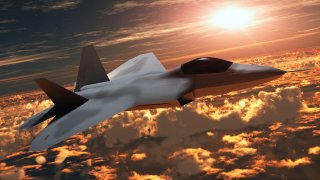Ranked: Meet the Best 5th-Generation Stealth Fighters to Fly the Skies
Here’s how these fighters would likely perform, ranked from worst to first.
In September 1997, an unusual-looking aircraft — the world’s first truly stealth fighter — left the runway at Lockheed Martin’s Marietta, Georgia facility. Its wide, angular body looked like it had been ripped right out of the pages of a science fiction story. It blurred the lines between the unusual stealth aircraft the United States was using for attack and bombing missions and the high-performance fighters America relied on for control of the skies.
Before this new aircraft, the F-15 Eagle had previously ruled the roost of America’s air superiority mission. Its astonishing air combat record of 104 wins and zero losses had been enough to make any nation think twice about picking a dogfight with Uncle Sam. But the F-15’s famously massive radar signature (said to cover some 25 square meters on a radar screen) had placed its dominance into question.
However, after decades of focus on flying higher and faster to defeat enemy air defenses, it was time for a change.
Introducing the world to 5th generation (stealth) fighters
This new jet, dubbed the F-22 Raptor, was such a departure from anything that came before it that it defied classification, serving as the basis for an entirely new generation of fighters to come.
Today, some 25 years later, only three other jets anywhere in the world have offered capabilities considered close enough to the Raptor to earn a seat at its generational table. These jets, collectively known as the 5th generation of fighters, combine low-observable designs with advanced data-fusing avionics to offer incredible new capabilities. Included on the list are the Lockheed Martin F-35 Joint Strike Fighter, the Chengdu J-20 Mighty Dragon, and the Sukhoi Su-57 Felon.
In order to qualify for this elite fraternity of fighters, a jet must meet these (generally accepted) criteria:
- Stealth
- A high degree of maneuverability
- Advanced avionics systems
- Multi-role capabilities
- Network or data fusion capabilities
Related: Everything you need to know about fighter generations
How to rank the world’s stealth fighters
When comparing stealth fighters, most people tend to focus on the “tale of the tape” just like we would when comparing boxers or cage fighters: hard numbers like top speeds, service ceilings, and thrust-to-weight ratios. These numbers are reported by national governments, military branches, and aircraft manufacturers. While all three of those groups may have reason to overstate or even understate capabilities, these figures are generally accepted as accurate by the world at large, which makes them a logical basis for comparison.
But while the following analysis will lean heavily on hard, quantifiable figures as they’re reported, it will also delve into the more qualitative things like how technology and tactics coalesce to create capabilities — and because that sort of discussion is, by its very nature, hypothetical — and by extension — somewhat subjective, your list may look a little different from mine.
Because the old football adage “on any given Sunday, any team can beat any other team” holds true in a fight just like it does on the gridiron, the real king of the skies can only be crowned in combat. Here’s hoping we never actually see that happen, but based on publicly available information, here’s how these fighters would likely perform, ranked from worst to first.
Related: What kind of fighter could the latest military tech really build?
#4 Russia’s Sukhoi Su-57 Felon
The worst of the world’s stealth fighters.
Russia has a long and storied history of exaggerating or overtly overstating its military capabilities for the sake of media attention: its ventures into the realm of stealth fighters serve as a textbook example of this approach. The Su-57 began development (then known as the PAK FA) as a joint venture between Russia and India until India backed out because the decades-in-the-making fighter failed to live up to expectations.
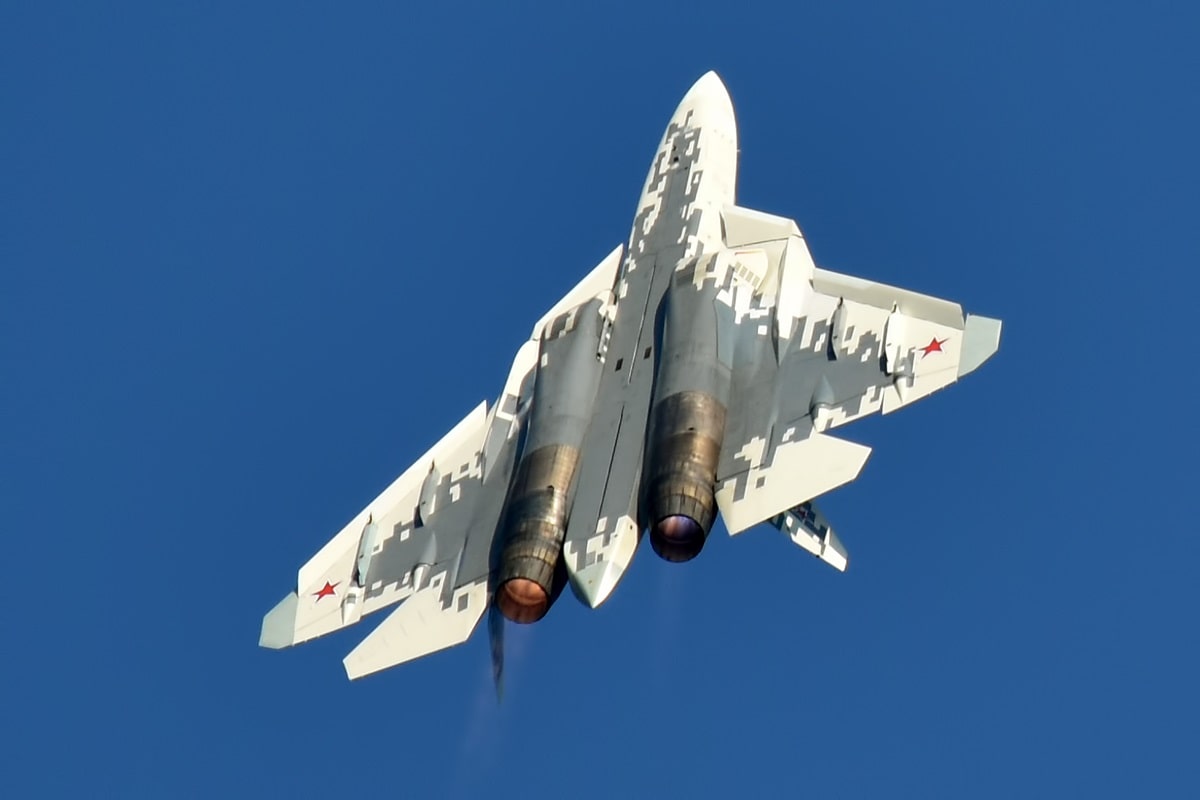
Since then, things haven’t gotten much better for Russia’s stealth fighter. The entirety of Russia’s Su-57 fleet currently consists of just 12 hand-made prototypes of varying degrees of finish and only two serial production jets. That count would have been three now, but the first Su-57 to roll off of Sukhoi’s production line promptly crashed shortly after takeoff.
Radar cross-sections (RCS) are subject to a great deal of debate online and should always be taken with a grain of salt, but expert assessments of the Su-57 suggest that it boasts an RCS of about .5 square meters—which is about the same as a 4th generation F/A-18 Super Hornet when flying without ordnance and 5,000 times bigger than the F-22 Raptor.
Stealthy woes aren’t the Su-57’s only problem — delays in Russia’s 5th generation engine program have left its Felon fleet operating the same AL-41F1 engines found in Russia's non-stealth but highly capable 4th generation Su-35S. A Rand Corporation analysis of the aircraft’s advanced 360-degree sensor suite posits that the system itself remains incomplete as well, likely hindered by international sanctions placed on Russia following its 2014 invasion of Ukraine. These issues are sure to be exacerbated by deeper-cutting sanctions against Russia after its recent large-scale invasion of Ukraine.
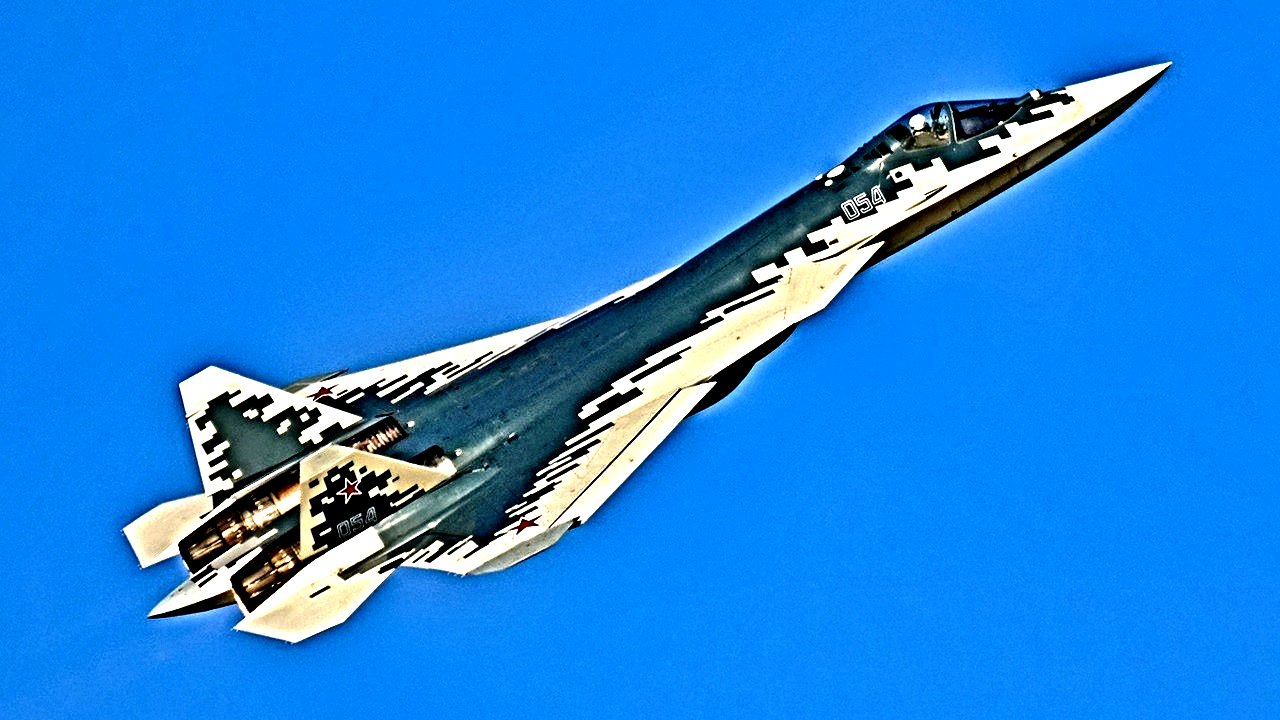
However, despite the Su-57’s problems, it should be remembered that Russian air warfare doctrine does not lean as heavily on stealth as America’s, and the Su-57 remains extremely difficult to detect when approaching from head-on (as one might during a fighter intercept). Combine that with 360-degree thrust-vector control allowing for fantastic maneuverability once targeted and a thrust-to-weight ratio about comparable to the Super Hornet and it becomes clear that the Su-57 would be no slouch in a scrap with practically any 4th-generation fighter. Although Su-57s have been deployed to Syria, no Felons have reportedly seen any combat to date, although some reports have emerged that the Su-57 might have participated in some capacity in the Ukraine war.
#3 China’s Chengdu J-20 Mighty Dragon
A designer imposter fighter with real chops.
China’s Chengdu J-20 Mighty Dragon is the nation’s first operational stealth aircraft, but evidence suggests China wasn’t really starting from scratch when they designed it. Between 2008 and 2014, a Chinese-Canadian businessman named Su Bin managed to gain access to classified materials regarding America’s F-22 and F-35 programs (among others) which he provided directly to the Chinese government. As a result, many have pointed out that the J-20 was likely designed with blueprints for America’s F-22 Raptor also on the table, leveraging Lockheed Martin’s design methodology.
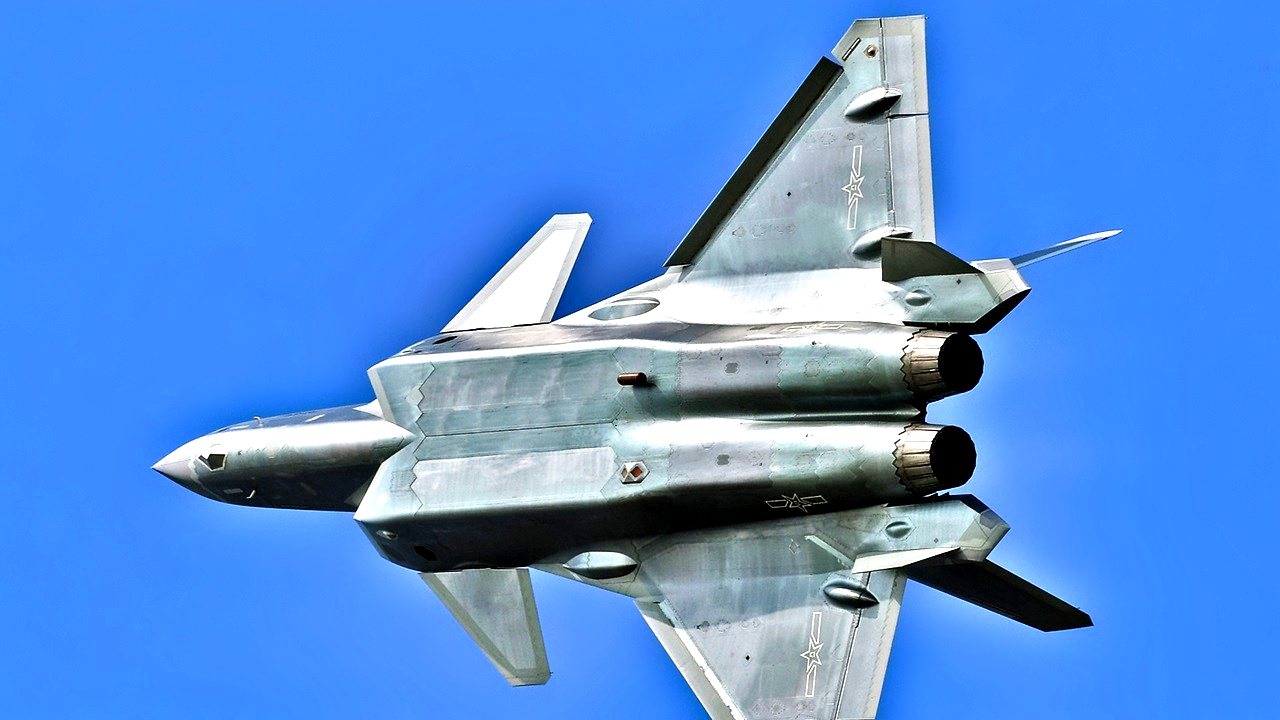
However, the aircraft itself actually bears a more striking resemblance to a different 5th generation fighter: Russia’s defunct MiG MFI, or Project 1.44. As is the case with many Chinese aircraft, the J-20 is likely a design that borrows heavily from both of these programs.
The J-20 entered service in 2017 and has seen considerable production since, with more than 150 airframes now in service. However, China has struggled to field its truly 5th generation engine, the WS-15. It has instead equipped its fleet with either Russian-sourced 4th generation AL-31 engines or improved indigenous equivalents in the WS-10. Early J-20s did not include thrust vector control, but more recent iterations have added the capability in an attempt to close with America’s F-22 Raptor.
The first J-20s saw combat exercises in 2018, with China’s military using the platform to devise stealth fighter tactics. The lack of significant combat experience found at every level of China’s military represents a significant disadvantage when compared to America’s four-decade of experience operating stealth jets and even Russia’s tactical aviation experience in places like Syria. However, the J-20 outclasses the Su-57 in a number of very important ways; most notably, in terms of stealth.
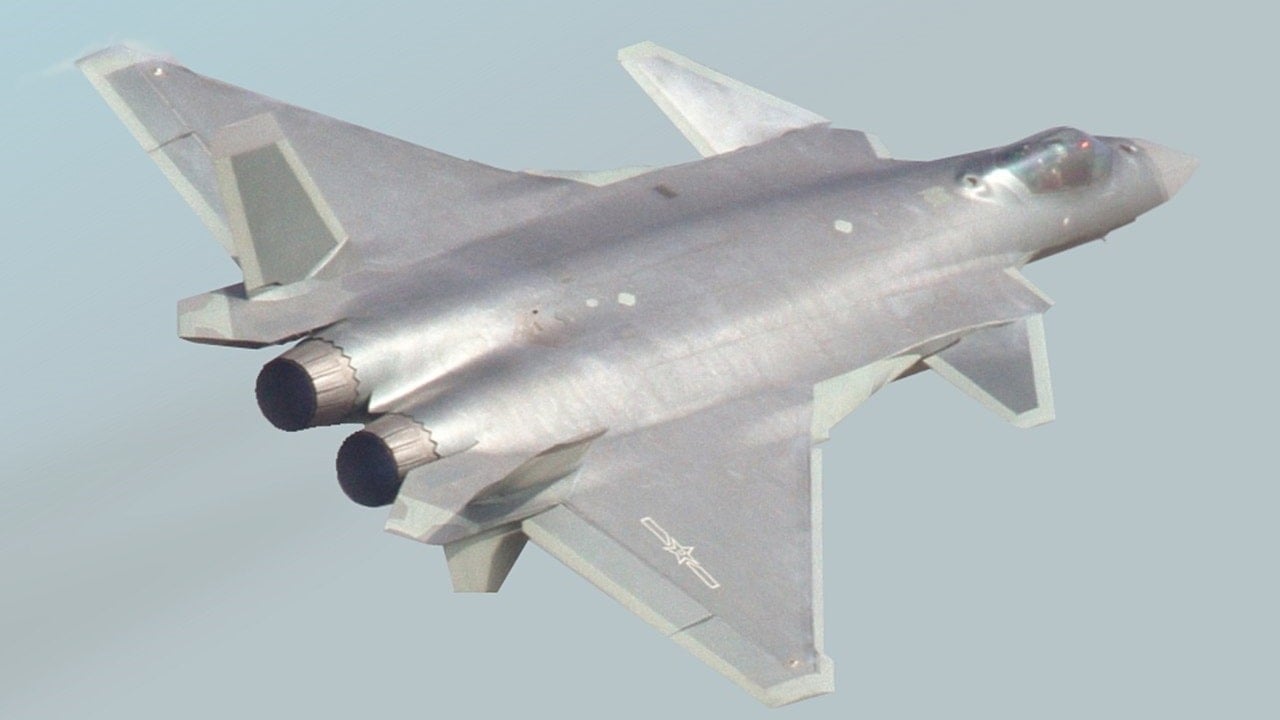
Expert assessments of the J-20’s radar cross-section place it somewhere between .08 and .3 square meters. This places it well ahead of Russia’s Su-57 in a head-on comparison (RCS varied depending on the angle from which the aircraft is observed), but well behind both of America’s stealth fighters.
#2 America’s F-35 Lighting II
A highly capable financial boondoggle.
Lockheed Martin’s F-35 Lightning II, also known as the Joint Strike Fighter, has gotten a lot of bad press in recent years thanks to the program’s frequent delays, setbacks, and cost overruns. But something that tends to get lost in the discussions about how expensive the F-35 is proving to be, is just how capable this aircraft really is.
With a reported radar-cross section of 0.0015 square meters, the F-35 appears 5-10 times larger than the F-22 does on radar when approaching from head-on, but that’s still only about the size of a golfball. The aircraft’s stealth gets lots of attention, but the F-35’s biggest claim to fame comes in the form of its onboard systems. The F-35’s AN/APG-81 Active Electronically Scanned Array (AESA) Fire Control Radar system is widely considered the best in the world. It’s so powerful that it can actually be leveraged for electronic warfare (EW) operations, making the F-35 the only attack aircraft in the U.S. arsenal that can handle its own EW in a fight.

Radar data is supplemented by the jet’s AN/AAQ-37 Electro-optical Distributed Aperture System, which consists of six high-resolution infrared sensors at different points on the airframe to provide a complete 360-degree view of the battlespace. This system can identify and track other aircraft in the area, incoming missiles, and even allow the pilot to look through the fighter’s fuselage using his or her helmet-mounted viewing system during nighttime operations.
